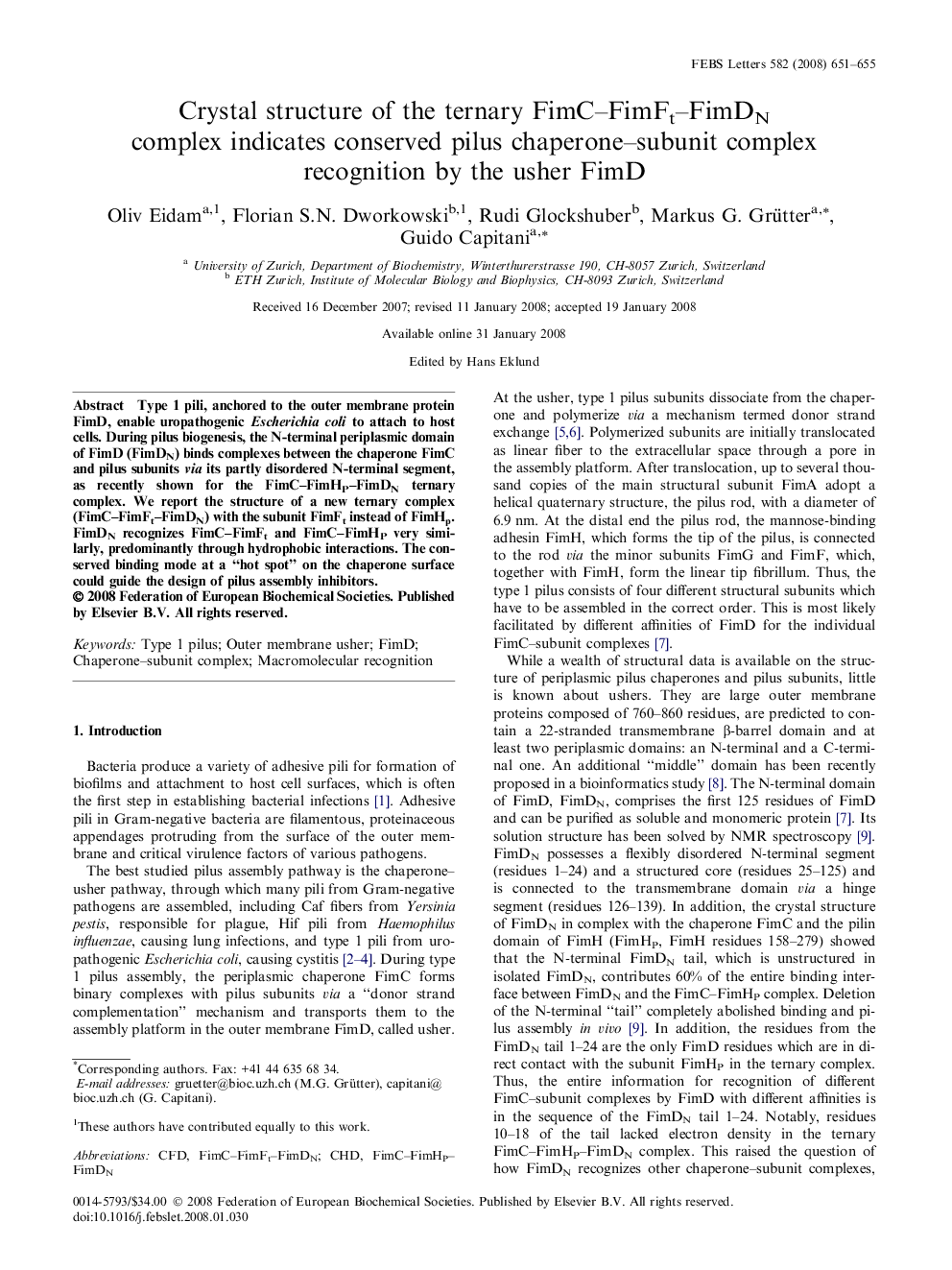| Article ID | Journal | Published Year | Pages | File Type |
|---|---|---|---|---|
| 2051158 | FEBS Letters | 2008 | 5 Pages |
Abstract
Type 1 pili, anchored to the outer membrane protein FimD, enable uropathogenic Escherichia coli to attach to host cells. During pilus biogenesis, the N-terminal periplasmic domain of FimD (FimDN) binds complexes between the chaperone FimC and pilus subunits via its partly disordered N-terminal segment, as recently shown for the FimC–FimHP–FimDN ternary complex. We report the structure of a new ternary complex (FimC–FimFt–FimDN) with the subunit FimFt instead of FimHp. FimDN recognizes FimC–FimFt and FimC–FimHP very similarly, predominantly through hydrophobic interactions. The conserved binding mode at a “hot spot” on the chaperone surface could guide the design of pilus assembly inhibitors.
Keywords
Related Topics
Life Sciences
Agricultural and Biological Sciences
Plant Science
Authors
Oliv Eidam, Florian S.N. Dworkowski, Rudi Glockshuber, Markus G. Grütter, Guido Capitani,
